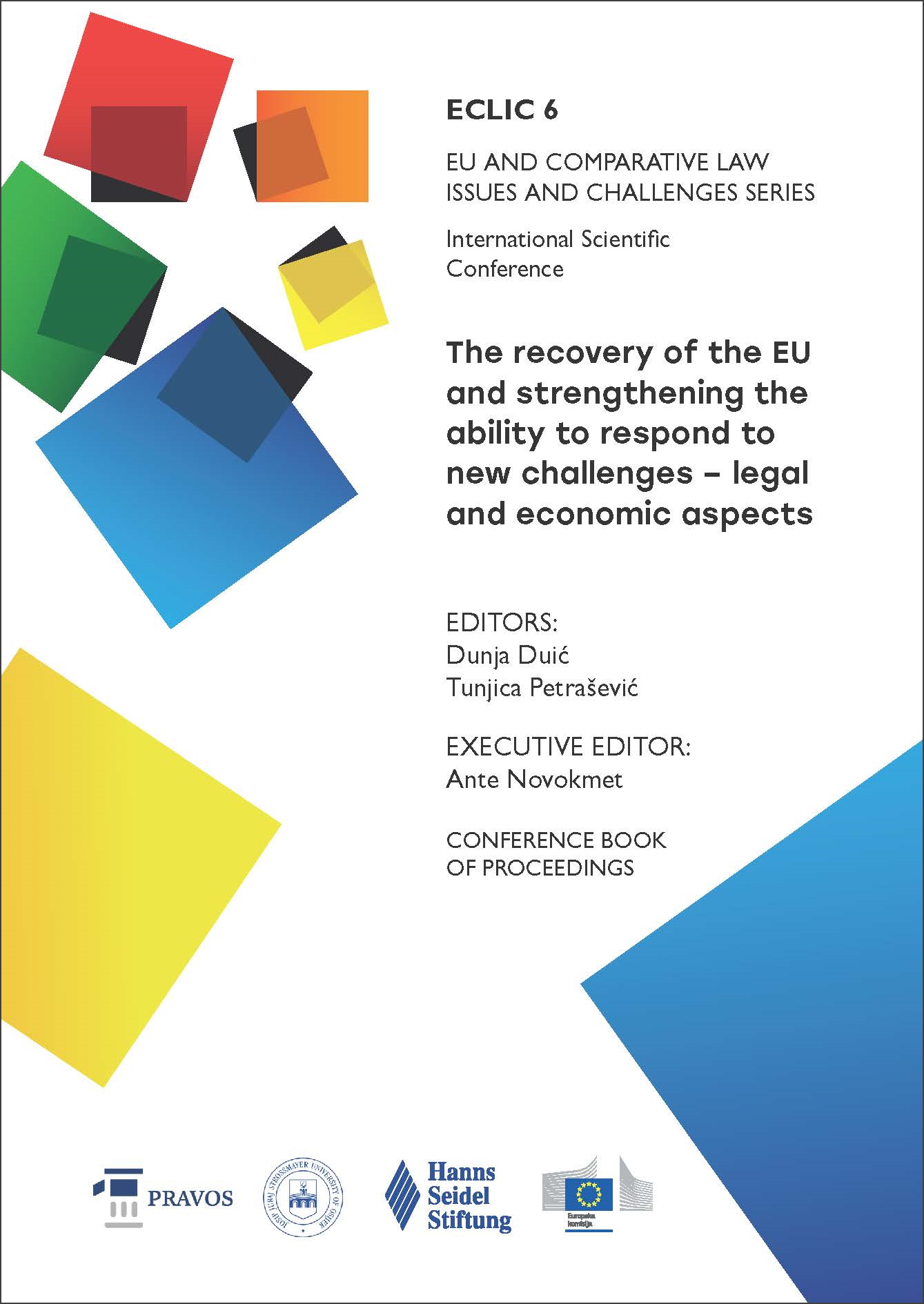SPATIAL PLANNING IN THE EU AND CROATIA UNDER THE INFLUENCE OF COVID-19 PANDEMIC
DOI:
https://doi.org/10.25234/eclic/22445Abstract
Spatial planning is an interdisciplinary process dealing with practices of regulating and transforming the space, including experts from various fields such as lawyers, spatial and urban planners, geographers, civil engineers, economists, sociologists, etc. Spatial plans are general acts that arise due to the complex spatial planning process in which public participation is a necessary tool for transparent and legal procedure. They impact human rights due to their influence on a healthy environment, organization of life, quality of public services, green areas in the cities, etc. Spatial plans also deal with the economic aspect of investments, urban planning, and development of a particular territory. Cities are rapidly evolving and are characterized by density and overcrowded population, so the EU has a special interest in the adequate organization of the space. Consequences of the COVID- 19 pandemic have produced a need for a different land use regulation from the established one. New challenges for the Member State’s governments include regulation for the organization of life and everyday needs in 15 minutes’ walk areas (work, market, health care, school, kindergartens, public services, parks, etc.). Although the European Union does not have direct competence in spatial planning of each Member State, it has a strong influence on the Member States through regulations (for example, European Spatial Development Perspective, The New Leipzig Charter, etc. which provide a strong framework for good and sustainable urban governance) and practice, as well as through the financial support to the Member States. This paper has two main goals. The first aim of this paper is to analyse how the EU tries to overcome the consequences of the pandemic in the physical planning system (recommendations, guidelines, financial support, consulting, or others). We also aim to discover how the pandemic affected the process of adopting the spatial plans in the Member States on the example of Croatia in one case study. The paper is divided into several parts. After the introduction, the first part of the paper brings an overview of the spatial planning process in the EU and Croatia based on the analyses of the relevant EU and domestic regulations. Next part of the paper deals with the influence of the COVID-19 pandemic on the spatial planning at the EU level, and on the development and adoption of spatial plans in Croatia. This includes the duration of the process, restrictions, and new ways of public participation in the process of the development and adoption of spatial plans (for example online public presentations), the influence on economic development (investments in a building), social distancing, etc. Last part of the paper will contain a research of development and adoption of spatial plans under the influence of the COVID-19 pandemic. The paper concludes with particular suggestions for improving the Croatian situation based on the good practices of the EU.
Downloads
Published
How to Cite
Issue
Section
License
Copyright (c) 2022 Mateja Held, Kristina Perkov

This work is licensed under a Creative Commons Attribution-NonCommercial 4.0 International License.
Authors retain the copyright on the papers published in the Journal, but grant the right of first publication to the Journal. Papers accepted for publication or already published in ECLIC of the Faculty of Law in Osijek may be published by the author(s) in other publications only with proper notice of its previous publication in ECLIC.


